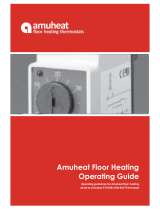
VI.KT.G7.02
6 | © Danfoss | 2018.05
Settings overview
Line Page
Factory
setting
Your setting
Slope 2175 11
Displace (parallel displacement) 2176 13
Temp. min. (flow temp. limit, min.) 2177 13
Temp. max. (flow temp. limit, max.) 2178 13
Intgr. time (time constant for room temp.) 3015 16
Gain - max. (room temp. limitation, max.) 3182 16
Gain - min. (room temp. limitation, min.) 3183 16
Limit (return temp. limitation) 4030 17
Gain - max. (return temp. limitation - max. influence) 4035 18
Gain - min. (return temp. limitation - min. influence) 4036 18
Intgr. time (time constant for return temp. limitation) 4037 19
Priority (priority for return temp. limitation) 4085 19
Auto-reduct (setback temp. dependent on outdoor temp.) 5011 20
Boost 5012 20
Ramp (reference ramping) 5013 21
Optimizer (optimizing time constant) 5014 21
Based on (optimization based on room / outdoor temp.) 5020 22
Total stop 5021 23
S1 T filter (outdoor temp. filter) 5081 23
Cut-out (limit for heating cut-out) 5179 24
Motor prot. (motor protection) 6174 25
Xp (proportional band) 6184 25
Tn (integration time constant) 6185 25
M1 run (running time of the motorized control valve) 6186 25
Nz (neutral zone) 6187 26
ECA address (choice of room panel / remote control) 7010 28
P1 exercise (pump exercise) 7022 28
M1 exercise (valve exercise) 7023 28
Actuator (gear motor / thermo actuator) 7024 28
DHW prior. (closed valve / normal operation) 7052 29
P1 frost T (frost protection) 7077 29
P1 heat T (heat demand) 7078 30
Standby T (standby temperature) 7093 30
Ext. (external override) 7141 30
Knee point 7162 31
Min. on time (min. activation time gear motor) 7189 31
Daylight (daylight saving time changeover) 7198 31
ECL address (master / slave address) 7199 31
Type 7600 32
Code no. 8300 33
Ver. (version no.) 8301 33
Backlight (display brightness) 8310 33
Contrast (display contrast) 8311 33
Language 8315 34
MOD address (MODBUS address) 8320 34
1.2
0
10 °C
90 °C
OFF
-4.0
0.0
50 °C
-2.0
0.0
25 s
OFF
-15 °C
OFF
OFF
OFF
OUT
OFF
100
18 °C
OFF
80 K
30 s
35 s
3 K
OFF
ON
OFF
GEAR
OFF
2 °C
20 °C
10 °C
OFF
40 °C
10
ON
15
130
XXXX
XXXX
16
10
English
5
!























